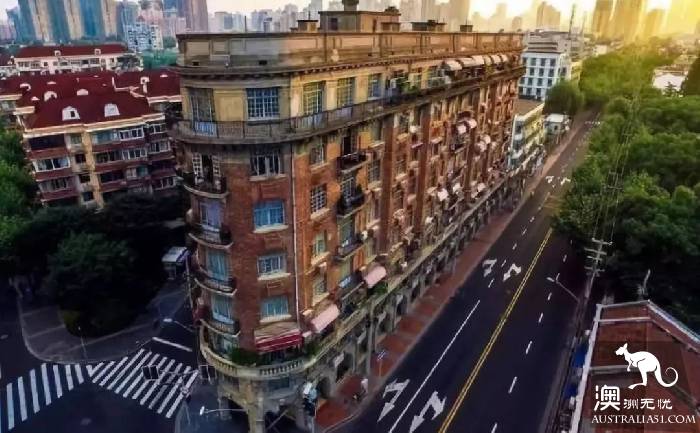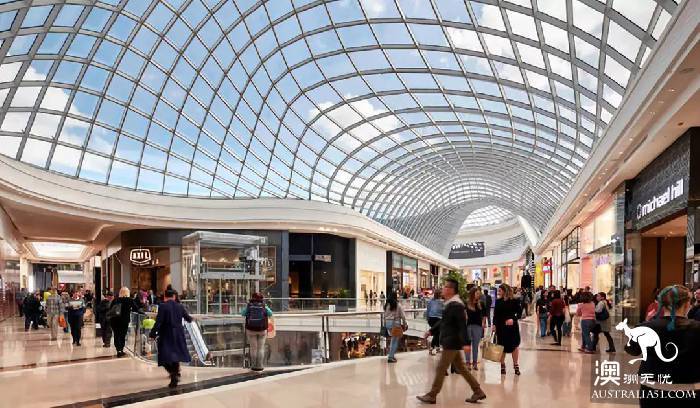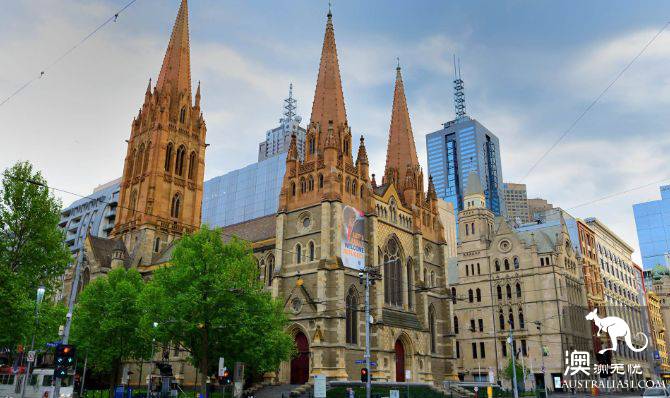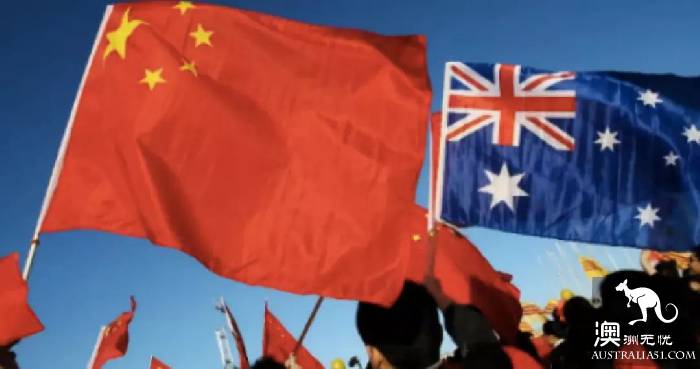preface
In late autumn, the Indus leaf yellowed, once again from Melbourne back to the familiar and unfamiliar city, hometown of Shanghai.
Having lived in Melbourne for a long time, I returned to Shanghai to compare the two places. In fact, this is also the wish of many hometown relatives and friends, hoping to have a reference to evaluate their proud magic city of Shanghai.
Melbourne, which has 4.8 million inhabitants, ranks first among the big cities in western developed countries in terms of population, with only a few big cities such as Tokyo, New York, London and Chicago surpassing her. Los Angeles has a population of more than 4 million, Berlin more than 3 million and Toronto nearly 3 million.
Melbourne was named the world's most livable city by the economics people seven times (second in 2018, lost to Vienna). The comparison between Shanghai and Melbourne should be interesting.

1 "eating" in Shanghai and Melbourne
My place of residence in Shanghai is Xuhui District, where the French concession used to be a 10-minute walk north to the area where the consulates gathered. Last year, there were a lot of small stalls nearby, mostly because of illegal buildings were demolished, leaving a small number of restaurants. Compared with the rest of Shanghai, I have fewer options to live in, but even so, it is more convenient than Melbourne.

Get up in the morning and go to breakfast after washing. One bowl of bean flower, one bowl of salted soybean milk, two Youtiao, one tea leaf egg, one baking cake is the standard match for my wife and me. They add up to only 13 yuan, less than 3 Australian dollars.
In Melbourne, a cup of coffee or milk tea with a ham cheesecake (Muffin) is a standard breakfast for McDonald's or KFC for A $8 and A $16 for two. Breakfast in Shanghai is too cheap.
Hotels in Shanghai can be divided into several levels. The first level is large stalls and small restaurants in commercial areas and shopping malls. This kind of place does not have the private room, such as Nanjing big row stalls, "grandma street" and so on. In this grade restaurant eat bowl noodles about 15-30 yuan, order a few dishes to drink about 80 yuan per person.
Melbourne corresponds to restaurants in major shopping malls. Chadston, known as the largest shopping mall in the Southern Hemisphere, is home to Australia, Italy, Japan, India and, of course, China. At these Chinese stores, a $10-15-a-day meal and a few dishes per capita are about A $25-30.

The ability to provide chartered rooms is a sign of Shanghai's second-class hotel. The per capita consumption of these hotels ranges from 100 to 200 yuan. Melbourne corresponds to hotels that offer full-fledged banquets, but are far below Shanghai's standards, and can be said to be shabby. These stores generally do not have a private room, per capita consumption of 50 to 100 Australian dollars.
Shanghai more high-end hotels per capita consumption 400 to 500 yuan, if order some expensive seafood can easily thousands. The service, quality and environment of these shops are excellent and truly delicious. Red meat is a common dish in Chinese restaurants in Shanghai and Melbourne, but only in Shanghai I really learned what is fat but not greasy, sweet and delicious, the entrance is changed, the gap is not a little bit.
Shanghai also has many five-star hotels and garden hotels to provide catering, but the main wedding banquet. There are tens of thousands of people in a table. But that's more of a "eat" environment and a showroom.
There are also a number of high-end hotels in Melbourne, but the average person can't find the threshold, and I'm just getting a piece of information in the last edition of the paper. After all, it's a "minimax"-rich service for millions of dollars a year to the Australian dollar, which is not related to the mass of the civilian population. I want to be the same in China.
"in renminbi terms, the price of 'eating' in Shanghai is cheaper than that in Melbourne, but many friends will point out that this comparison is pointless because Melbourne's per capita income is much higher than that in Shanghai. In fact, this problem is more complex, the first must be linked to food, clothing, accommodation and 'living'. "
2 "live" and "money bag"
In Shanghai and Melbourne, housing is a key factor in a person's economic situation.
The average home ownership rate in Australia is 65%. According to a recent survey by Zhejiang University, China's largest cities have a lower housing ownership rate than the national level because of a large number of migrants, with Shanghai ranking at the lowest 67.9 percent. Shanghai's housing ownership rate is slightly higher than Melbourne's.
Melbourne's median house price is A $ nine hundred thousand. Shanghai will pay 5 million yuan for a modest 100-square-meter apartment. Although Melbourne's house is well above the Shanghai average and has permanent land ownership, the value of the house is similar in both places.

Only 16 percent of Australians own two homes, and many of Shanghai's aborigines have more than one. I tried to find it, but I couldn't find a reliable figure that might not be less than 30 percent. In addition, Shanghai resident deposits per capita one hundred and four thousand yuan. It is likely that the total assets of the Shanghai aborigines will exceed those of Melbourne citizens.
Experience around the world shows that property and property income (house and stock value, rent, wealth management and stock income) are closely related to consumption. This explains in some ways why Shanghai's consumption is so hot, whether it's big stalls or high-grade hotels, it's always overcrowded. This coincides with the double 11 shopping festival, truly appreciate the Shanghai express delivery, online shopping convenience and scale.
So far, the property comparison between the Shanghai aborigines and Melbourne residents has been covered. Completion of this subject requires reasonable theoretical and mathematical models, scientific methods, and a large number of reliable data that individuals cannot complete in a short period of time. But I still looked up some relevant data for analysis and comparison.
2018 Credit Suisse's World Wealth report says Australia has the world's largest median household wealth, at $ one hundred and ninety thousand (1.35 million yuan). Major Australian newspapers have followed up on the Credit Suisse report, with many articles titled more than 1 million Australian millionaires, and a lot of Chinese-language self-media.
The Credit Suisse report notes that the main factor at the top of Australia's rankings is the rise in property value. Australia is an immigrant country, with a large influx of people into a small number of major cities such as Sydney and Melbourne each year, pushing up house prices and rents.
"average house prices in Australia double every eight years," is the most persuasive argument by Australian real estate agents to fool people into buying homes, which have become the first choice for monetary preservation and investment.
Australia's housing market is largely driven by high public debt. Australia's household debt-to-income ratio is now close to 200 percent, with UBS analysts calling it the "world's most". In 2017, Australia's total household debt was 188 percent of Australia's total personal disposable income.
The argument that the number of Australian millionaires has exceeded 1 million is not accurate. The reality is that more than a million Australians are worth more than 1 million of their homes, but much of them are still in debt. It is likely that a person's home is worth more than a million dollars, his annual after-tax income is 80, 000, and he is still in debt of one hundred and sixty thousand.
How many real millionaires are there in Australia?
The Credit Suisse 2017 report actually has data: the number of Australians with a net worth of more than $1 million rose from 234,000 in 2015 to 255,000 in 2017, and the number of extremely high net worth people with net worth of more than $50m rose to 3000 across Australia.
The above data is macroscopical, below through some look-up data, specific analysis of the wealth of Australian households.
Melbourne's four-person family spends A $4363 a month excluding rent and A $1223 a month excluding rent per person. The average monthly rent is A $917 for one room, A $1120 for two bedrooms, and A $1427 for three bedrooms and one room. Australia currently has per capita disposable income (after-tax income) of A $1009 per week.
It is good to have a stable full-time working life for a single person in Melbourne. If a newly employed young person lives in a parent's home and is more economical, he can accumulate nearly A $40, 000 ( two hundred thousand RMB) a year. Young dual workers do not have children living separately from their parents, and at least one person earns about A $60, 000 to $70, 000 a year for home repayments (30- three hundred and fifty thousand yuan).

Australia's 50-year-old, children grew up to work, home loans paid off, and a second income peak. This group of dual-worker families, high-income people, such as corporate executives, senior white-collar, business owners will be very rich.
But a middle-aged family of four will be more difficult. Australia's toddlers are high, averaging A $100 a day, forcing their wives to take care of their children at home or work half-time. If the child goes to private school, the annual tuition is close to 20, 000, the famous school is more expensive. Such families often borrow and spend.
According to a 2015-16 survey by the Australian Bureau of Statistics, 3/4 of Australian households are in debt, with an average household debt of A $168600. (55% of credit card debt, 34% of home loans and 17% of tuition loans).
In Australia, it is common for many residents in their fifties to pay off their mortgages. That explains why only 16% of Australian households have the ability to invest in second homes.
If Australian adults lose their jobs for a variety of reasons, the quality of life will be very poor. The monthly subsistence allowance is about A $320 a week, and a single person can only maintain a minimum standard of living.
The above analysis may conclude that the total assets of the Shanghai aborigines may be higher than those of Melbourne residents and Melbourne residents (after-tax income).
Higher than Shanghai, Melbourne's cost of living is not low, but Melbourne residents dare to borrow money to spend.
In 2017, the number of trips abroad in Shanghai reached five million two hundred and fifteen thousand two hundred and ninety nine. Australia's residents travel abroad is more than 10 million, Melbourne accounts for 1/5 of Australia's population, the number of outbound tourists are likely to exceed more than 2 million, according to the proportion of the population Melbourne people travel abroad more than Shanghai.
3 Infrastructure-Shanghai Roller Melbourne
It talks about Melbourne and Shanghai's "eat" and "live", compares the "money bags" of residents of the two places, and then looks at "OK", which is the infrastructure of the two cities.
Melbourne is 9900 square kilometers, Shanghai is not small 6300 square kilometers, Melbourne is 1/3 more than Shanghai. Shanghai needs to build super-large infrastructure, housing, and public service systems to support modern life. Shanghai should be very successful in this respect.
The Shanghai subway line expanded from one of my leave lines in 1992 to 16 lines, the Huangpu River Bridge from two to 10, and the cross-river tunnel from one to 14.
During my 26 years in Melbourne, however, the authorities built only two tunnels, a bridge, a half-circle roundabout highway and a revamped airport highway. Because of the lack of transportation infrastructure, Melbourne has a lot of traffic and throat areas. Driving through these areas during off-peak hours may take only 10 minutes, and it is common for one hour to be blocked during peak hours.
According to news released by the Shanghai Metro, the daily passenger traffic volume of Shanghai Rail Transit on March 23, 2018, exceeded twelve million three hundred and fifty four thousand, the highest ever. Melbourne has more than 1.1 million people using the bus system. The daily passenger volume is about eight hundred thousand. It is clear that Shanghai and Melbourne are not in the same order of magnitude in terms of transportation within the city. "
Melbourne has a good Melbourne
Shanghai and Melbourne are better off than Shanghai in terms of wealth and hardware, but why are so many Shanghai immigrants still flocking to Melbourne?

First, Melbourne's population-to-land ratio is much smaller than Shanghai's.
When Shanghai's population of more than 20 million people is concentrated in a region of only 2/3 Melbourne, inevitably crowded and noisy, while Melbourne, with a population of more than 4 million, will become empty, relaxed and clean, highlighting Melbourne in the air. Water and food quality advantages.
Melbourne from the center to the suburbs, parks and golf courses, green space is far larger than Shanghai. The city has ten kilometers along the bay to swim on the fine beach, blue sky and white clouds, blue waves. For more than A $1,000 a year in Melbourne, you can join a golf club and play at will. This cost-effective must make the rich in Shanghai coveted.
Australia is recognized as a "lucky" country with a vast and small population.
Australians do not have to be poor, and people in populous countries need to achieve a higher standard of living through intense competition and hard work. Last year, for example, revenues from Australia's coal exports offset the value of all Australian imported cars (Australia no longer makes cars).
Australia's economy has been expanding and employment has been high for the past 27 years, making job-hopping so common that people don't feel comfortable enough to fire their bosses and run away. Similarly, due to fewer high-quality staff, managers will be more accommodating to high-quality employees.
Australia's labor law is tight, overtime pay is very high, so overtime is not much.
On the contrary, Shanghai white-collar overtime is very common and intense, and success in Shanghai may require more effort to cope with external and internal competition than in Melbourne.
More importantly, Melbourne has an environment suitable for Chinese people to live and work in.
This environment includes a complete rule of law and social security system, giving people a sense of security and equity. In particular, Australia's universal health care, although the public health care system has been criticized for waiting too long, but the prevention and treatment of major diseases are still very effective. The cost of chemotherapy and radiotherapy for cancer patients is a basic national burden, with regular medication covered by health care and dozens of Australian dollars at a time, with significant discounts for retirees and low-income earners.
Anti-racial discrimination and multi-cultural recognition in Australian society offset the impact of racial discrimination on Chinese to some extent.
The Anglo-Saxons are the main Australian ethnic group, and they value honor culturally and are polite (of course only on the surface) who pay attention to personal struggle and equality of opportunity, which is the same as the Chinese's "eating hard and bitter." There are similarities between the two cultures: some values of Chinese are easily accepted by mainstream society, and Chinese have always been regarded as excellent immigrants. The culture of "good manners" and "meekness and thrift" are in common with each other, and some values of Chinese people are easily accepted by mainstream society.
Chinese families' emphasis on education can make their children more successful.
Chinese hardworking and financial talent often enable first-generation immigrants to overcome linguistic and cultural disadvantages into the middle of society, or higher. The proportion of Chinese in Australia's two hundred and fifty thousand high net worth groups is certainly not small. Of course, Chinese also have weaknesses and shortcomings, such as language barriers, too much emphasis on material comparison, spiritual levels of pursuit is not high enough, not enough unity, and so on.

END
Any analysis of Shanghai must be taken into account in the all-China dimension. Shanghai is the gateway of China. The country has drawn a lot of resources through "land finance", which has created favorable conditions for the pooling of Chinese and foreign capital in Shanghai. This process is also a process of wealth creation, it should be said that the indigenous people of Shanghai greatly benefited from the process. Shanghai's migrant population is not so lucky, many people can only "live in a snail", the current high house prices and high rent, many migrants are in debt.
Shanghai's development is not and cannot be "the best". The problem first lies in social management, which is usually referred to as soft power. During my stay in Shanghai, I felt that people were most worried about the inadequacy of serious medical insurance, the unaffordable price of drugs, food safety and environmental protection, all kinds of corruption and social equity, and fourth, the burden of live a retired life.
Shanghai's future success depends on solving a series of deep-seated problems, such as: how to maintain a strong government while controlling the abuse of authority, adjusting the relationship between government and the market, developing new strategic industries, and reducing commercial costs. Cultivate a new incentive mechanism to retain talent to promote innovation.
Melbourne also has a range of problems, such as high business costs, low conversion rates for technology, reliance on raw material exports, poor infrastructure, small local markets, and so on.
Major reforms are needed in both Shanghai and Melbourne, as are Shanghai and Melbourne. Who can break away from each other in 20 years' time? the gap between the two cities may make it unnecessary to write a similar article. Who do you think will be better then? Shanghai or Melbourne?